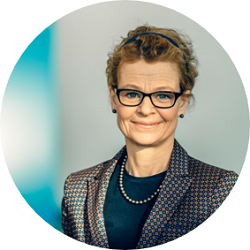E-commerce grows – despite cautious consumers
Our latest report E-commerce in the Nordics shows that e-commerce is continuing to drive retail growth. The report offers insights into how Nordic consumers think, shop, and prioritize—and how
Despite global uncertainty, rising tariffs and cautious consumers, we are seeing signs of recovery. Inflation has stabilized, and interest rates have fallen, so purchasing power has improved. At the same time, consumers remain cautious and are prioritizing saving over consumption.
 “This edition explores how checkout is evolving across the Nordics. We look at delivery preferences, consumer expectations, and the role of AI in shaping future shopping experiences – highlighting both shared patterns and national differences,” says Annemarie Gardshol, President and Group CEO of PostNord.
“This edition explores how checkout is evolving across the Nordics. We look at delivery preferences, consumer expectations, and the role of AI in shaping future shopping experiences – highlighting both shared patterns and national differences,” says Annemarie Gardshol, President and Group CEO of PostNord.
The report provides a comprehensive view of the latest trends in Nordic e-commerce – ranging from global shopping behaviors and checkout experiences to omnichannel and circular consumption.
How PostNord supports e-commerce
At PostNord, we offer e-retailers flexible delivery solutions and a smooth route into the Nordic market, with its 24 million consumers. The report is a valuable tool for businesses, analysts, and policymakers who want to understand how e-commerce is developing in Sweden, Denmark, Norway and Finland.
“We hope this report provides useful insights into the evolving Nordic e-commerce landscape. At PostNord, we continue to support retailers and consumers with reliable, fast, and sustainable customer solutions and delivery options,” says Annemarie Gardshol.
Download the report
You can download the report on postnord.com: E-commerce in the Nordics – Autumn 2025
About the report
In collaboration with HUI Research, the E-commerce in the Nordics report is based on consumer surveys conducted in Sweden, Denmark, Finland and Norway in August and September 2025. A total of 4,000 people aged 18–79 participated, evenly distributed across the four countries, with 1,000 respondents per country.
Unless stated otherwise, the figures in the report are compared with the same period in the previous year.
